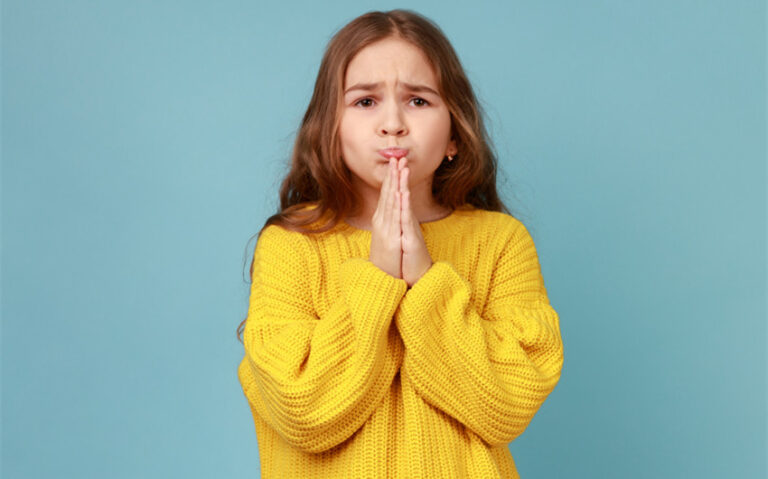Understanding the Anxious Attachment Style in Relationships
Relationships can be tricky, especially when certain attachment styles come into play. If you’ve ever found yourself constantly seeking reassurance or worrying about your partner leaving, you may have what’s known as an anxious attachment style. This attachment style, often developed in childhood, can lead to feelings of insecurity and fear in relationships.
Understanding it is key to improving emotional well-being and building healthier connections. In this article, we’ll explore what anxious attachment is, its signs, and how you can manage it to create more secure and trusting relationships.
What is Anxious Attachment?

An anxious attachment style is a specific type of attachment behavior characterized by insecurity, fear of abandonment, and a heightened need for reassurance in relationships. This attachment style stems from attachment theory, which suggests that the bonds we form with caregivers in childhood influence how we connect with others throughout life. People with an anxious attachment style often struggle with feelings of uncertainty and worry in romantic relationships, fearing that their partner may leave them or not love them enough.
Inconsistent Caregiving and its Role
The core issue in anxious attachment is inconsistency. When caregivers alternate between being emotionally supportive and unavailable, the child becomes uncertain about whether their emotional needs will be fulfilled. This uncertainty breeds a sense of insecurity, and the child may become hyper-focused on their relationships as a means of securing the love and attention they crave.
Children who experience inconsistent emotional support often grow into adults who seek constant validation in their relationships. They may be overly attentive to perceived changes in their partner’s behavior or worry excessively about losing their partner’s affection. This constant need for validation and fear of abandonment are hallmarks of anxious attachment.
Why Anxious Attachment Matters
Understanding anxious attachment is crucial because it can significantly impact how individuals navigate their relationships. Adults with an anxious attachment style may feel constantly on edge, fearing that their partner doesn’t love them as much as they do or that the relationship might end. These feelings can lead to behaviors like clinginess, jealousy, or emotional volatility, which can strain relationships over time.
By recognizing these patterns, individuals can begin to address the root causes of their attachment style and work toward developing more secure, trusting relationships. Awareness of an anxious attachment style also helps people communicate their needs more clearly and seek healthier ways to manage their fears and insecurities.
Signs of Anxious Attachment in Relationships

Individuals with an anxious attachment style often display specific behaviors in relationships that stem from deep-rooted fears of abandonment and insecurity. These behaviors may not always be obvious at first, but they tend to intensify as the relationship progresses or when the person feels emotionally threatened. Understanding the signs of anxious attachment can help both individuals and their partners recognize the attachment patterns at play, leading to better communication and more supportive relationships.
1. Fear of Abandonment
One of the most prominent signs of anxious attachment is a constant and overwhelming fear of being abandoned by one’s partner. People with this attachment style often worry that their partner will leave them, even when there’s no clear reason for concern. This fear may lead to hypervigilance, where they become overly focused on small signs of withdrawal, like a delayed text or a brief change in mood, which they interpret as signals that their partner is pulling away.
Common behaviors driven by fear of abandonment:
- Frequently asking for reassurance from a partner that they won’t leave.
- Overanalyzing a partner’s words, actions, or tone for signs of detachment.
- Becoming anxious or upset when the partner spends time away or with others, fearing it signals a potential end to the relationship.
- Overreacting to minor conflicts or misunderstandings, fearing they might lead to a breakup.
This constant worry can strain the relationship, as the person with anxious attachment may need frequent validation to feel secure.
2. Need for Reassurance
Another key sign of anxious attachment is the continuous need for reassurance and validation from a partner. People with this attachment style often seek constant confirmation that their partner loves them, cares for them, and is committed to the relationship. While it’s natural for everyone to want reassurance from time to time, individuals with anxious attachment may require it excessively, which can lead to tension.
Examples of needing reassurance:
- Frequently asking, “Do you love me?” or “Are you still happy with me?”
- Seeking constant compliments or affirmations of affection.
- Feeling insecure if their partner doesn’t respond quickly to messages or express love frequently.
- Becoming anxious if their partner doesn’t engage in routine acts of affection, like saying “I love you” or giving physical touch.
This constant need for reassurance can make the partner feel overwhelmed and may create a cycle where both individuals feel pressure to meet unrealistic emotional demands.
3. Clinginess or Overdependence
Clinginess is another common behavior seen in people with anxious attachment. This manifests as a need to be constantly close to or in contact with their partner, both physically and emotionally. Individuals may struggle to spend time apart from their partner, and they often feel distressed when they do. The idea of emotional or physical distance can trigger anxiety, leading to behaviors that appear overly dependent or clingy.
Signs of clinginess or overdependence:
- Wanting to spend all available time with their partner and feeling uneasy when apart.
- Regularly texting or calling their partner throughout the day to stay connected, even when unnecessary.
- Feeling uncomfortable or threatened when their partner spends time with friends, family, or co-workers.
- Becoming upset or anxious if their partner engages in activities without them, such as hobbies or social events.
While a desire for closeness is natural in relationships, clinginess can lead to tension if it limits the personal space or independence of the partner.
4. Emotional Rollercoasters
Individuals with anxious attachment often experience intense emotional highs and lows in their relationships, depending on how secure or insecure they feel at any given moment. When they feel reassured, loved, and close to their partner, they may feel extremely happy and secure. However, if they sense any distance or uncertainty—real or perceived—their emotions can swing to anxiety, fear, or sadness.
Signs of emotional rollercoasters:
- Feeling euphoric when their partner gives attention or expresses love, followed by deep anxiety or sadness if the partner seems distant.
- Having mood swings that are heavily dependent on their partner’s actions or attention.
- Reacting strongly to small relationship fluctuations, such as feeling extremely hurt by minor disagreements or misunderstandings.
- Going from feeling deeply connected to feeling abandoned or insecure based on small, everyday interactions.
These emotional ups and downs can be exhausting for both individuals in the relationship and may contribute to ongoing tension and misunderstandings.
Causes of Anxious Attachment Style

The anxious attachment style typically develops during childhood and is shaped by the interactions between a child and their caregivers. It arises from a combination of environmental, emotional, and even observational factors. Understanding the root causes of anxious attachment can shed light on why individuals behave the way they do in adult relationships, and recognizing these causes can help people begin the process of healing and forming healthier bonds.
1. Inconsistent Parenting
One of the most significant causes of anxious attachment is inconsistent caregiving. When caregivers are sometimes nurturing and attentive, but at other times emotionally unavailable, distant, or unresponsive, it creates confusion and insecurity in the child. The child learns that love and attention are unpredictable, which makes them anxious about whether their needs will be met.
For example, a child might experience periods when their parent or caregiver is highly engaged, offering affection and support, followed by periods when that same caregiver is emotionally unavailable or preoccupied. This inconsistency teaches the child that attention and care are not guaranteed, leading them to become hyper-vigilant and constantly seeking reassurance.
In adulthood, this inconsistency translates into an anxious attachment style where the individual seeks constant validation from their partner, fearing that they will be abandoned or that the love they receive will disappear without warning.
Signs of inconsistent parenting that lead to anxious attachment:
- Caregivers who are emotionally present at times but neglectful or distant at others.
- Caregivers who alternate between being overly protective and neglectful, creating confusion in the child.
- Unpredictable availability of comfort, making the child anxious about whether they will receive care when needed.
This unpredictability in caregiving fosters a sense of insecurity that carries into adult relationships, where individuals with anxious attachment may feel they need constant reassurance and attention to feel safe.
2. Childhood Experiences
Childhood experiences play a significant role in shaping an individual’s attachment style. Trauma, neglect, or a lack of emotional support during childhood can contribute to the development of anxious attachment. Children who grow up in environments where their emotional needs are not consistently met may develop a heightened sensitivity to rejection and abandonment.
For example, a child who experiences parental neglect, bullying, or instability in their home life may internalize feelings of unworthiness or fear that they are not deserving of love. These early experiences can cause the child to grow up with an anxious attachment style, constantly fearing rejection and seeking validation in their adult relationships.
Other childhood experiences that can lead to anxious attachment include:
- Divorce or separation: Children who witness the separation of their parents may develop an anxious attachment style, fearing that relationships are fragile and easily broken.
- Early loss of a caregiver: Experiencing the death or sudden departure of a caregiver can create a deep-seated fear of abandonment, leading to anxious behaviors in relationships.
- Exposure to conflict: Growing up in a household with high levels of conflict or emotional turmoil can cause children to feel insecure about their relationships and develop anxiety around emotional stability.
These early experiences often contribute to a heightened fear of abandonment in adulthood, making individuals with anxious attachment style overly sensitive to changes in their relationships.
3. Inherited Patterns
Attachment styles are often learned through observation. Children tend to model their attachment behaviors based on what they observe in the relationships around them, especially those of their parents or caregivers. If a child witnesses unhealthy attachment patterns between their caregivers—such as codependency, emotional manipulation, or constant conflict—they may internalize these patterns and replicate them in their own relationships later in life.
For instance, if a child observes one parent constantly seeking validation from the other or expressing fear of abandonment, they may grow up believing that this is normal behavior in relationships. As a result, they may develop an anxious attachment style, repeating the same patterns they observed during their formative years.
Examples of inherited patterns:
- A child sees a parent frequently anxious or insecure about their partner’s commitment and may adopt similar fears in their own relationships.
- A child grows up in a household where emotional needs are not openly discussed or addressed, leading them to feel anxious about expressing their own needs.
- Observing a parent or caregiver experience frequent breakups or turbulent relationships can make a child fear that relationships are inherently unstable.
In this way, attachment styles can be passed down through generations, with children repeating the behaviors and anxieties they witnessed growing up.
4. Emotional Neglect
Emotional neglect during childhood can have a profound impact on attachment style. Emotional neglect occurs when caregivers fail to provide the necessary emotional support and validation a child needs to develop a secure sense of self. Unlike physical neglect, emotional neglect is often subtle and can go unnoticed, but its effects are deeply felt by the child.
Children who grow up with emotionally neglectful caregivers may develop a belief that their feelings don’t matter or that they must work harder to earn love and attention. This leads to an anxious attachment style where the individual constantly seeks validation and reassurance from others, fearing that their emotional needs will not be met.
Signs of emotional neglect in childhood:
- A caregiver who dismisses or minimizes the child’s emotions, saying things like “You’re overreacting” or “Stop being so sensitive.”
- A lack of affection or warmth from caregivers, even when the child is upset or in need of comfort.
- Growing up in an environment where emotional expression is discouraged, leaving the child unsure of how to express their feelings or needs.
Emotional neglect fosters insecurity and a constant need for external validation, traits that are often present in individuals with anxious attachment.
How to Manage Anxious Attachment in Relationships
Managing anxious attachment in relationships requires self-awareness, communication, and intentional efforts to build emotional security. While anxious attachment can create challenges—such as fear of abandonment, overdependence, and a need for constant reassurance—there are effective strategies for managing these behaviors. By developing coping skills and fostering healthier relationship dynamics, individuals with anxious attachment can build more secure, trusting connections with their partners.
1. Self-Awareness: Recognizing Patterns and Triggers
The first step in managing anxious attachment is recognizing the patterns and triggers that lead to anxious behaviors. Self-awareness involves identifying the moments when fear of abandonment, insecurity, or the need for validation takes over and understanding how these emotions affect the relationship. Once these triggers are identified, individuals can begin to manage their reactions and work toward healthier responses.
Strategies for self-awareness:
- Journaling emotions: Keeping a journal of emotional highs and lows in the relationship can help individuals track patterns of anxiety, especially after certain events or interactions with their partner.
- Mindfulness practices: Techniques such as meditation or deep breathing can help individuals stay present in the moment, reducing the tendency to catastrophize or overthink.
- Reflecting on past experiences: Understanding how childhood experiences, past relationships, or specific moments of insecurity shape current behaviors can lead to greater self-awareness and control over anxious responses.
By recognizing the emotions that trigger anxiety in a relationship, individuals can work on responding thoughtfully rather than impulsively.
2. Open Communication: Expressing Needs and Fears
Open and honest communication is essential for managing anxious attachment. Rather than acting on insecurities or engaging in behaviors that may push a partner away (like excessive clinginess or jealousy), individuals with anxious attachment should aim to express their feelings and needs clearly. Sharing fears of abandonment or insecurity with a partner allows for more constructive conversations and can prevent misunderstandings.
Tips for healthy communication:
- Use “I” statements: Instead of blaming or accusing, focus on how you feel. For example, say, “I feel anxious when I don’t hear from you during the day,” instead of, “You never care about me.”
- Be specific about your needs: Rather than expecting your partner to guess what you need for reassurance, be clear. For example, “It would help me feel more secure if we could check in once during the day.”
- Avoid emotional outbursts: While anxiety may lead to heightened emotions, try to discuss concerns calmly. Take a moment to breathe and reflect before bringing up sensitive topics.
By communicating openly, individuals with anxious attachment can reduce the tension caused by unspoken fears and give their partners a chance to provide the reassurance they need.
3. Therapy and Counseling: Seeking Professional Support
For many individuals with anxious attachment, therapy or counseling can be an essential tool in managing their attachment style. A trained therapist can help individuals explore the roots of their anxious attachment—often linked to childhood experiences or past trauma—and guide them toward healthier coping mechanisms. Therapy also provides a safe space to work on communication, self-regulation, and relationship dynamics.
Types of therapy that may help:
- Cognitive Behavioral Therapy (CBT): CBT helps individuals identify negative thought patterns and replace them with more positive, constructive ways of thinking. For example, someone with anxious attachment might learn to challenge the automatic belief that their partner will leave them after a disagreement.
- Attachment-based therapy: This form of therapy focuses on understanding and healing attachment issues rooted in early experiences. It helps individuals develop more secure attachment behaviors by addressing underlying fears and anxieties.
- Couples therapy: For those in a committed relationship, couples therapy can help both partners understand each other’s attachment styles and work together to build a stronger emotional foundation. This therapy fosters better communication and mutual support.
Seeking professional support can be transformative in managing anxious attachment, offering tools and techniques to build emotional resilience and security.
4. Building Security: Learning to Self-Soothe
Learning to self-soothe is a critical aspect of managing anxious attachment. Individuals with anxious attachment often seek external validation to calm their insecurities, but learning to provide comfort and reassurance to oneself can reduce the intensity of anxiety and emotional dependence on a partner. Self-soothing involves developing techniques to calm anxious thoughts and emotions without needing constant reassurance from a partner.
Self-soothing techniques:
- Practice self-compassion: Remind yourself that your feelings of anxiety or insecurity are valid but do not define your worth. Self-affirmations like “I am deserving of love and care” can help you focus on your self-worth.
- Engage in relaxation techniques: Techniques such as deep breathing exercises, progressive muscle relaxation, or mindfulness meditation can help calm the mind and body when anxiety starts to rise.
- Develop a support network: While partners can provide reassurance, it’s important to have a support system outside of the relationship. Friends, family, or support groups can offer emotional support when you need it, reducing the pressure on your partner to meet all your emotional needs.
By learning to self-soothe, individuals with anxious attachment can become more emotionally independent and reduce the pressure they place on their partner for constant reassurance.
5. Setting Healthy Boundaries
Setting and respecting boundaries in a relationship is essential for managing anxious attachment. People with anxious attachment may feel the urge to always be close to their partner, but this can lead to clinginess or overdependence. By establishing healthy boundaries, both partners can maintain a sense of autonomy and emotional balance.
Ways to establish healthy boundaries:
- Respect your partner’s need for space: Understand that your partner may need time alone or with friends, and this does not mean they are withdrawing from the relationship.
- Set personal boundaries for emotional regulation: Identify when it’s appropriate to seek reassurance and when to self-soothe. For example, if you feel anxious because your partner hasn’t texted back, try to wait before reaching out again.
- Create balance in the relationship: Ensure that both partners contribute to the relationship emotionally, rather than one person shouldering all the reassurance and emotional labor.
Healthy boundaries prevent relationships from becoming overly dependent or suffocating, allowing both partners to feel secure without losing their individuality.
6. Developing Secure Attachment Behaviors
While anxious attachment is deeply rooted, individuals can work toward developing more secure attachment behaviors. Over time, with practice and support, it’s possible to shift from anxious behaviors to more secure patterns, where trust, emotional regulation, and communication thrive. This requires patience, but with consistent effort, individuals with anxious attachment can build healthier, more secure relationships.
Ways to develop secure attachment behaviors:
- Build trust gradually: Take small steps to trust your partner without constantly seeking reassurance. Over time, this builds a sense of security.
- Focus on positive experiences: Reflect on the times when your partner has been supportive and reliable, and use those moments to combat anxious thoughts.
- Reinforce positive self-image: Work on self-esteem by engaging in activities that make you feel confident and independent outside of the relationship. This helps reduce reliance on your partner for validation.
By developing secure attachment behaviors, individuals can experience more stable, fulfilling relationships and build a sense of security that extends beyond their romantic partnerships.







